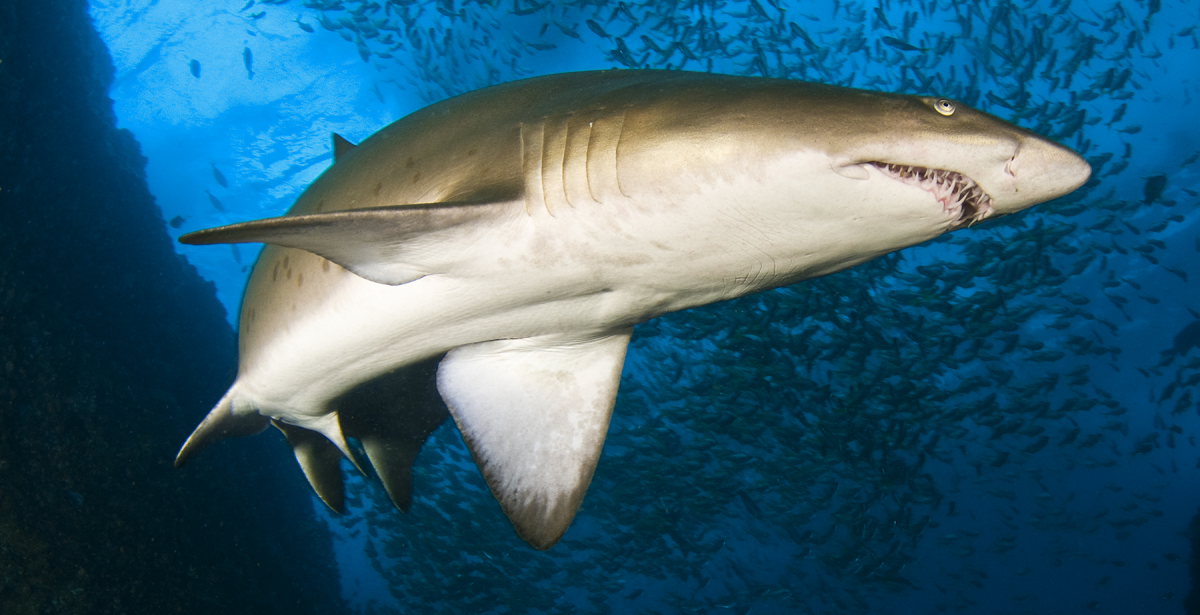
Australia’s east coast Grey Nurse Shark (Carcharias taurus) population is listed as critically endangered under the Environment Protection and Biodiversity Conservation Act 1999. The population has undergone a severe reduction in size due to activities such as fishing and shark control programs.
This project has estimated the eastern grey nurse shark adult population to be between approximately 960 and 3,100 animals (depending on the selected maturity schedule). Importantly, the model used to derive this population estimate supports a growing population of approximately 3.4 to 4.5% per annum.
Earlier population estimates for the eastern population ranged from 410─1660 individuals (total), with the most robust estimate at the upper end (1150─1660). These estimates have been based on photo identification techniques which are prone to bias due to site fidelity if the entire population is not sampled.
A robust estimate of population size and trend is the number one priority of the recovery plan developed by the Department of Environment in 2014.
Although the population appears to be on the road to recovery, the final report for this project does not advocate the lifting of existing protective measures. Further work on the level of risk facing the recovering population would be required before it would be appropriate to alter the range of existing protective measures.
This project collated existing tissue samples and collected new samples from Grey Nurse Sharks at aggregation sites in Queensland and New South Wales (in partnership with the University of Queensland and the New South Wales Department of Primary Industries) and used close kin-mark recapture to estimate adult population size and trend for the eastern Australian population.
Close-kin mark-recapture builds on techniques developed in Hub research on euryhaline elasmobranchs and white sharks. It uses cutting-edge genetic analyses of tissue samples to identify sharks that are related by sharing one parent (half-siblings). The number of half-siblings in a population is directly related to the number of breeding adults. For example, a smaller adult population will have a larger proportion of related sharks, and vice versa.
The same genetic samples can be used to identify animals that share one grandparent, and this in turn can be used to estimate the number of adults in the previous generation. Comparing this estimate with the present number of adults may show the generational change in population size, or population trend.
Evidence-based estimates of population size and trend for the eastern Grey Nurse Shark will enable the recovery of the species to be assessed, and provide guidance on-going monitoring and other actions to assist species recovery.
The project builds on earlier research funded by the Department of the Environment and the Office of the Threatened Species Commissioner.
Related information
